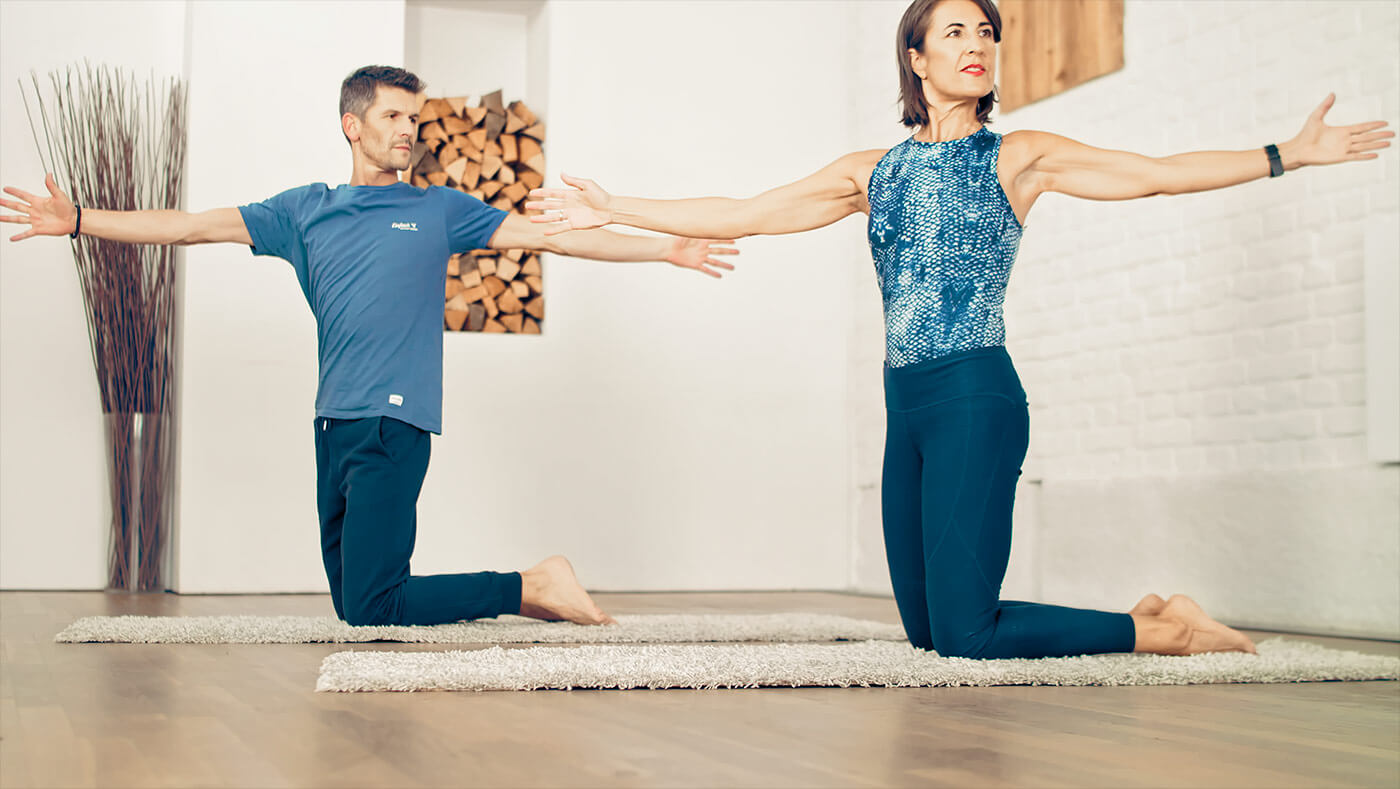
Pilates technique explained
Pilates & Fascia (1)
My first conscious encounter with the fasciae
June 27, 2022, by Maria Felsner
Not only trainers and therapists deal with fascia, but also medicine, psychology, sports science and pain therapy are diving deeper and deeper into the topic of fascia and are continuously providing us with new insights.
My personal story about fascia
I had my first conscious encounter with the subject of fascia about 20 years ago. At that time, as a mother of two, I felt very fit. I found my fulfillment as a trainer and speaker at various institutes in addition to being a happy mother.
I also did a lot of sports and regularly traveled to the far north with my sons to find peace in nature.
Nevertheless, I noticed that my body felt increasingly tense. I often suffered from headaches. My digestion was irregular and the elasticity of my connective tissue was slightly diminished. In general, I felt how less resilient I was in everyday life.
I confided my perceived change to a close friend, who also promptly confirmed that I seemed a bit overwhelmed and perhaps should just cut back.
I was slightly irritated. As a trainer, I kept my clients fit and agile through a wide variety of training methods and relaxation techniques. But I was not able to help myself.
By chance I came across a gifted therapist who offered Rolfing®, a manual bodywork. After the first treatment, she made me aware of the following things, which I was not aware of at the time:
- that both positive stress and the feeling of being responsible for others can have a negative effect on the fasciae.
- That the body stores mental, physical and emotional tensions, traumas. And that this shifts pain and the cause of which rarely find a diagnosis. And
- That Rolfing can improve the functioning of my body and my mental and emotional well-being.
"Rolfing is a trademarked term for a method of manual bodywork originally called Structural Integration. It is designed to work on the fascial network and align the body with the ideal of the vertical line in gravity."
Wikipedia (2021): Rolfing, [online] https://de.wikipedia.org/wiki/Rolfing [27.06.2022].
Now you will ask yourself, what does Rolfing have to do with fascia? And whether Rolfing really helped me?
I can immediately answer the second question with a resounding "yes". I only needed a few sessions and my complaints subsided. But one thing was clear to me right away. Massage alone is not enough. I have to work on several points in order to become more resilient again, both physically and mentally, for everyday life.
The fascination of the fasciae
One of the points was to explore the fascia. One thing in advance: I have not yet reached the end of my knowledge. I would like to share some of it with you in this and other articles.
As you could probably already read between my lines, fascia affects us on several levels. Namely, on the physical, mental, emotional, neurological and cognitive level.
I would now like to try to show these different approaches and levels in several parts. And in such a way that you not only get a theoretical background, but you also have the possibility to use this knowledge for yourself.
Fascia can trigger pain
In this article I would like to show why fascia can cause pain and how we can act against it.
Pain in the fasciae arise primarily in the muscle fasciae, technically known as myofasciae. Myo stands for muscle, fascia stands for ligament/bandage. Fascia surrounding the organs (called visceral fascia) can also cause pain. The kidney, for example, can trigger pain in the lower back via its fascial suspension.
Here is another example. If the plantar fascia, i.e. the fascia on the soles of the feet, is hardened, this can pull up to the head due to the posterior fascial traction band. The result of this pull is often headaches.
Now you may understand even better why it is so important to regularly massage the soles of your feet with a fascia or tennis ball, especially before exercising.
Thus, it is easy to understand what tension, combined with gravity, load changes or compensatory misloads after injuries, triggers in your body and how these factors influence each other.
A nice image for this is the spider's web. If only one connection is loosened, the entire web shifts. In the same way, we can transfer this to our body. Bones and the vertebral bodies are held in the right place by the myofascial balance of tension.
Instead of seeing the body as a stable house on which the muscles hang, we imagine the body as a three-dimensional network under tension, in which the bones "float freely". Fascia research describes this using the "tensegrity" model, which I will discuss in more detail in one of my next articles.
Let's stay with fascia pain for now.
Fascia pain occurs because of stuck or hardened fascia. Functional fasciae are mobile and able to glide. If we move too little, are overloaded or injure ourselves, the fasciae become matted. Stress can also be a trigger for painful fascia. Fasciae can become so thick that they even constrict nerves.
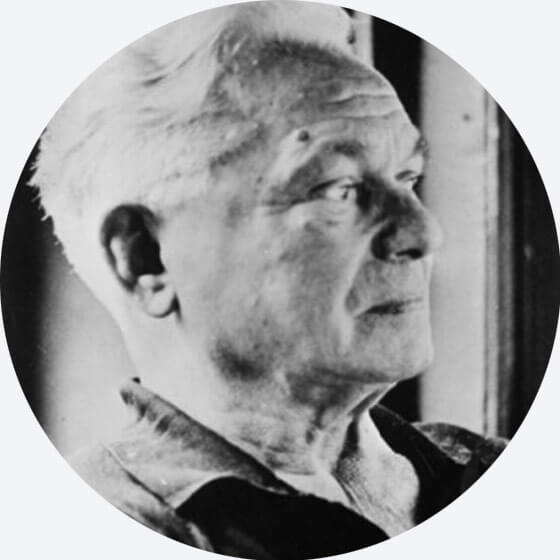
"The goal of Pilates is to have the whole body in mind so that the body becomes as supple as a cat's, not as muscular as a brewer's horse."
JOSEPH PILATES
Here you can download our LIVE Pilates hour on the topic. In this LIVE lesson we will deepen the tips on the topic "Pilates & Fascia".
Why do fasciae stick together?
In my case, it was because my fasciae were sticking together due to both physical and mental overuse.
Other causes may include:
- Permanent stress - this leads to a chronic state of tension, to which the fasciae react with tension and become tangled.
- Mental trauma due to bad experiences, strokes of fate, etc.. It is now known that fascia has an emotional memory, which then settles in the body. Diseases of all kinds can occur as a result.
- One-sided stress and movement, e.g. due to competitive sports or a lot of office sitting.
- Undersupply of oxygen and nutrients, poor nutrition and accumulation of toxins in the body negatively affect our fasciae.
- Due to lack of depth sensitivity (proprioception) in the lumbar spine.
- In general, a balanced diet and sufficient intake of fluids are the basis for ensuring that the acid-base balance in the body is correct and thus the suppleness of the fasciae is maintained.
- Sleep disorders reduce the release of HG hormone (Human Growth Hormone). This hormone is partly responsible for the fact that the fasciae remain slippery. Sleep also ensures that the fasciae can relax and become less tangled.
The consequence of myofascial pain
What are the consequences of myofascial pain?
Myofascial pain is usually the cause of Back pain. Neck pain, headaches, pain in the knees, hips and shoulders.
For the most part, this pain is chronic and, due to its persistence, massively limits the quality of life and vitality of the affected person. Of course, the symptoms can overlap with other chronic pain conditions.
Typical for fascia pain are:
- Sensory disturbances and pain, which radiate.
- Burning pain, which can often spread over a large area.
- For example, at the beginning of an exercise, the thoracolumbar fascia feels stiff, but it becomes increasingly elastic and pain-free as you move. ("The fascia thoracolumbalis is a fascia in the lumbar region that surrounds the erector spinae muscle." Wikipedia (2015): Fascia thoracolumbalis, [online]. https://de.wikipedia.org/wiki/Fascia_thoracolumbalis [27.06.2022].)
- When momentum and loosening movements reduce pain.
Conclusion: Fascia absorbs many stress factors. It is not always physical stress that is responsible for fascia pain. Therefore, it is important for us to teach more than simple exercises. To make the body as well as the mind more resilient, other methods such as relaxation, targeted breathing, healthy nutrition, self-awareness and mindfulness should be included.
PS: With our Pilates training calendar you can easily integrate regular Pilates training into your everyday life and stay motivated.

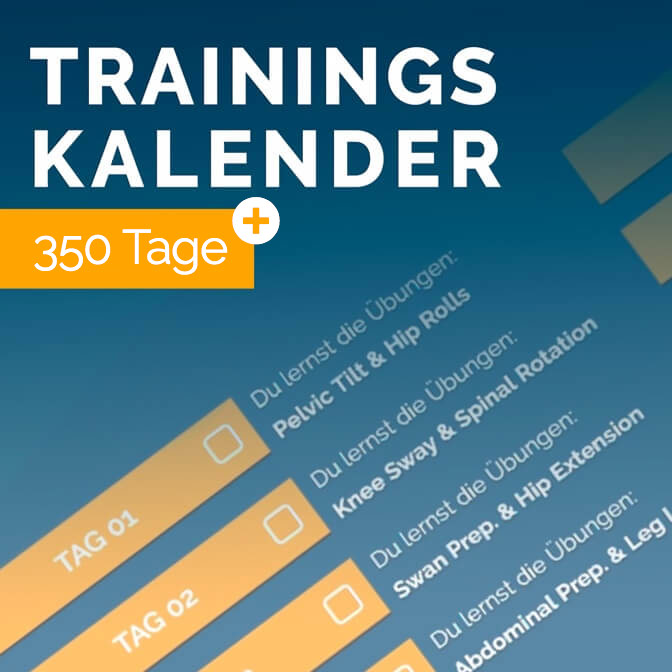
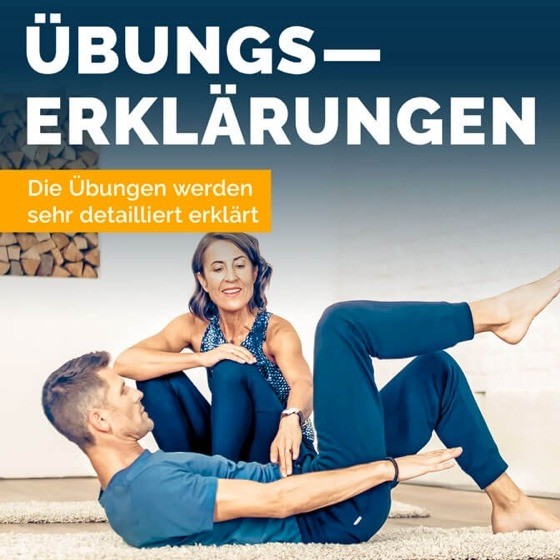

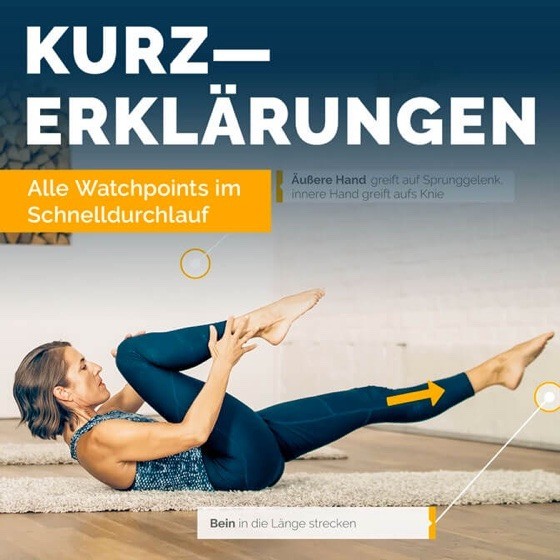

Dear Mary, what valuable information! I learn so much through you! Thank you also for your report from your personal life! I am a mother of 5 adult children and there was a lot out of the lot... I thank you for your motivating commitment! ❤ Marianne